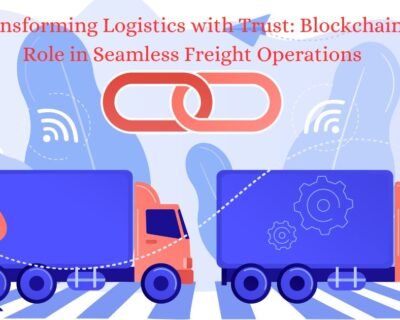Revolutionizing Finance: How Decentralized Finance and APIs Are Shaping the Future
The financial landscape is undergoing a seismic shift with the advent of decentralized finance (DeFi). At the same time, Application Programming Interfaces (APIs) are evolving into powerful tools for innovation, creating a perfect synergy that’s revolutionizing how financial services operate. Together, DeFi and API technology are enabling a new era of seamless integration, accessibility, and scalability in the financial ecosystem.
This blog dives deep into how the intersection of DeFi and API innovation is transforming traditional finance, empowering developers, and paving the way for unprecedented opportunities in the blockchain and FinTech sectors.
Understanding the Role of APIs in Decentralized Finance
APIs are the backbone of DeFi, serving as intermediaries that connect platforms, protocols, and users. In the DeFi ecosystem, APIs allow developers to interact with blockchain networks, retrieve data, and execute transactions without building complex infrastructures from scratch.
Key Functions of APIs in DeFi:
- Provide real-time data on cryptocurrency prices, liquidity pools, and trading volumes.
- Enable seamless interaction with DeFi protocols for lending, borrowing, and staking.
- Facilitate the integration of smart contracts and decentralized applications (dApps).
- Offer cross-chain interoperability for multi-blockchain ecosystems.
The Importance of API Innovation in DeFi
APIs are more than just connectors; they’re drivers of innovation in the DeFi space. By simplifying complex processes and enabling automation, APIs empower developers to build feature-rich, user-friendly applications.
1. Enhancing Accessibility
APIs break down barriers to entry, enabling even non-technical users to access DeFi services.
2. Accelerating Development
Developers can use APIs to build DeFi platforms faster by leveraging pre-built functionalities.
3. Driving Interoperability
APIs connect DeFi platforms across different blockchains, fostering a more unified ecosystem.
4. Enabling Scalability
APIs ensure that DeFi platforms can handle growing user bases and transaction volumes seamlessly.
How APIs Are Revolutionizing DeFi
APIs are transforming DeFi in several impactful ways, from automating processes to enabling real-time decision-making.
1. Automated Trading and Yield Optimization
DeFi platforms use APIs to enable automated trading bots and yield optimization tools, allowing users to maximize their returns without constant manual intervention.
Example: APIs like Uniswap’s provide developers with access to real-time liquidity data, enabling efficient trade execution.
2. Simplifying Cross-Chain Transactions
APIs facilitate cross-chain interoperability, allowing users to move assets seamlessly between blockchains like Ethereum, Binance Smart Chain, and Solana.
Example: Cross-chain APIs help DeFi platforms aggregate liquidity from multiple blockchains, offering better rates and reducing fragmentation.
3. Real-Time Data Analytics
APIs provide access to real-time market data, enabling users to track trends, analyze performance, and make informed decisions.
Example: APIs like The Graph power data dashboards for DeFi users, offering insights into liquidity, token performance, and trading volumes.
4. Payment Gateways and DeFi Integration
DeFi APIs enable businesses to integrate decentralized financial services into their platforms, such as accepting cryptocurrency payments or enabling peer-to-peer lending.
Example: Payment APIs allow e-commerce businesses to accept DeFi-powered cryptocurrency transactions without relying on traditional payment processors.
Key APIs Driving Innovation in DeFi
- Uniswap API
Offers access to liquidity pools, token prices, and trading functionalities. - Aave API
Facilitates integration with lending and borrowing protocols for DeFi platforms. - 1inch API
Supports decentralized exchange (DEX) aggregation, ensuring users get the best rates across multiple platforms. - Chainlink API
Provides decentralized oracles to connect smart contracts with real-world data. - Alchemy API
Delivers tools for building Ethereum-based dApps and DeFi platforms.
Benefits of Combining DeFi and API Innovation
The synergy between APIs and DeFi unlocks a wealth of opportunities for developers, businesses, and users alike:
1. Enhanced Efficiency
APIs automate complex processes, reducing time and resource consumption.
2. Improved Security
Many APIs include built-in security protocols, such as multi-signature wallets and encryption.
3. Greater Transparency
DeFi APIs provide users with verifiable data on blockchain activity, fostering trust.
4. Accessibility for Developers
APIs lower the technical barrier for building and scaling DeFi applications.
5. User-Centric Experiences
With APIs, developers can design platforms tailored to user needs, from beginner-friendly wallets to advanced trading tools.
Challenges in DeFi and API Integration
Despite their potential, combining DeFi and APIs presents challenges that must be addressed:
1. Standardization
APIs across DeFi platforms lack universal standards, making integration complex.
Solution: Promote open standards and encourage collaboration among blockchain networks.
2. Security Risks
APIs can be exploited if not properly secured.
Solution: Use trusted APIs and implement robust security measures like token-based authentication.
3. Regulatory Uncertainty
As DeFi grows, APIs must comply with evolving regulations.
Solution: Adopt APIs with compliance tools for KYC/AML and tax reporting.
Future Trends: APIs in the DeFi Landscape
- AI-Powered APIs
APIs combined with artificial intelligence will enable predictive analytics for DeFi users, enhancing yield optimization and risk management. - Cross-Chain Standardization
Improved cross-chain APIs will facilitate seamless asset transfers across blockchain ecosystems. - DeFi for Businesses
APIs tailored for enterprises will enable businesses to integrate DeFi services like lending, borrowing, and staking. - NFT APIs
As non-fungible tokens (NFTs) grow in popularity, APIs designed for NFT trading, minting, and verification will gain traction. - Compliance APIs
Regulation-focused APIs will simplify adherence to global financial laws, ensuring DeFi platforms operate legally.
Conclusion
The convergence of decentralized finance and API innovation marks the dawn of a new era in FinTech. APIs are enabling DeFi platforms to scale faster, deliver better user experiences, and drive financial inclusion across the globe. From automated trading tools to cross-chain interoperability, the possibilities are endless.
For developers and businesses, leveraging APIs is essential to thriving in the competitive DeFi ecosystem. Partnering with experienced blockchain development services ensures seamless API integration, allowing you to unlock the full potential of decentralized finance.
The future of finance is decentralized, and APIs are the key to its success. Are you ready to embrace this new era of innovation?






















Leave a Comment